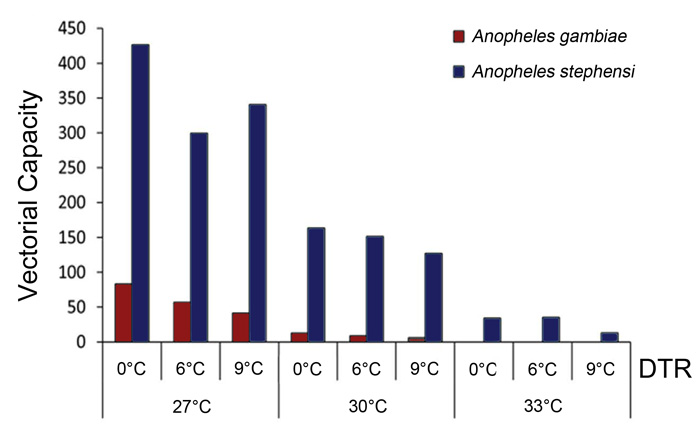| Follow @co2science |
Paper Reviewed
Murdock, C.C., Sternberg, E.D. and Thomas, M.B. 2016. Malaria transmission potential could be reduced with current and future climate change. Scientific Reports 6: 10.1038/srep27771.
Introducing their fascinating new study, Murdock et al. (2016) write that "several studies suggest the potential for climate change to increase malaria incidence in cooler, marginal transmission environments." But they add that "the effect of increasing temperature in warmer regions where conditions currently support endemic transmission has received less attention." And, therefore, they go on to investigate "how increases in temperature from optimal conditions (27°C to 30°C and 33°C) interact with realistic diurnal temperature ranges (DTR: ± 0°C, 3°C and 4.5°C) to affect the ability of key vector species from Africa and Asia (Anopheles gambiae and An. Stephensi) to transmit the human malaria parasite, Plasmodium falciparum."
So what did the three U.S. scientists learn from their study of the subject? They report that (1) "the effects of increasing temperature and DTR on parasite prevalence, parasite intensity, and mosquito mortality decreased overall vectorial capacity for both mosquito species" (see Figure 1 below), that (2) "increases of 3°C from 27°C reduced vectorial capacity by 51-89% depending on species and DTR, with increases in DTR alone potentially halving transmission," and that (3) "at 33°C, transmission potential was further reduced for An. Stephensi and blocked completely in An. Gambiae."
Consequently, and in light of these several exciting findings, the inquisitive researchers were led to conclude that rather than experiencing increasing malaria transmission in a warming world, any current or future warming should actually reduce malaria transmission potential in what are currently high transmission settings.

Figure 1. The effects of temperature and diurnal temperature range (DTR) on vectorial capacity. As indicated by the data, increasing mean ambient temperature (27, 30 and 33 °C) and DTR of (0, 6, 9 °C) decreases the vectorial capacity of both Anopheles gambiae (red bars) and Anopheles stephensi (blue bars). Source: Murdock et al. (2016).




